
Innovation isn’t just a buzzword; it’s the lens through which we envision the world of tomorrow. At Yanko Design, we’re endlessly inspired by concepts that serve as the bedrock for future advancements in products, technologies, and experiences. This shared passion connects us deeply with the Red Dot Award: Design Concept, a celebration of visionary thinking that pushes boundaries.
The “Best of Best” selections this year unveil a tapestry of creativity that defies conventional limits. From avant-garde consumer electronics to trailblazing health innovations, these concepts exemplify a daring spirit combined with ingenuity. We find ourselves particularly enchanted by designs that redefine user experiences, showcasing the harmonious blend of art and practicality. In addition, Red Dot even unveiled two new awards – the Next Gen Award that highlights winning projects from creatives under the age of 30, and the Peter Zec Prize for the most convincing concept (which is also entitled to a cash reward of SGD $10,000)! “Design concepts are mental experiments and sometimes small things can make a big difference. The future depends on today’s creatives and their visions,” explains Professor Dr. Peter Zec, founder and CEO of Red Dot. “Therefore, it is important to support existing talents and empower them to fully flourish.”
Each year, the Red Dot Award: Design Concept ignites our imagination, spotlighting creations that embody collaboration and artistic precision. We’re excited to unveil our standout picks from this brilliant array. Dive in to discover the Luminary Award winner—an extraordinary vision brought to life!
Click here to view more Award-winning designs from the Red Dot Award: Design Concept
Red Dot Award: Design Concept 2024 Best of the Best Winners
Innovative Design of Products and Systems for Forest Fires by Jiangnan University

Jiangnan University’s project focuses on designing innovative systems and products for forest firefighting, especially in the face of increasing forest fire risks due to extreme weather. It emphasizes a modular and portable equipment system tailored for the challenging conditions of the Daxinganling area in Heilongjiang, China. This system integrates six key dimensions of firefighting operations: function division, information transfer, firefighting modes, mobility, resource mobilization, and emergency risk avoidance, making it ideal for professional forest firefighting teams.
The tailored equipment encompasses a range of advanced solutions for specific firefighting scenarios. This includes full-body protective gear with a multi-functional helmet featuring heads-up display (HUD), communication systems, nightlight, respirator, and environmental detectors. Additional features include an emergency fire cover, oxygen cylinder, coolant valve, vital signs monitoring, protective clothing, and a powered exoskeleton for better mobility and protection. The conceptual fire suppression module employs innovative foam agents for efficient fire extinguishing, while an off-road motorized sprayer enhances material deployment and firefighter maneuverability. Additionally, underground fire detection is facilitated by an unmanned aerial vehicle (UAV) and auxiliary robots, assisting in the critical task of residual fire clean-up. This project aims to optimize integration and control for improved firefighting efficiency, safety, and risk management, leveraging existing command systems to address the unique challenges faced by forest firefighters in this region.
Down-less Down Jacket by Droga5 Tokyo, Part of Accenture Song
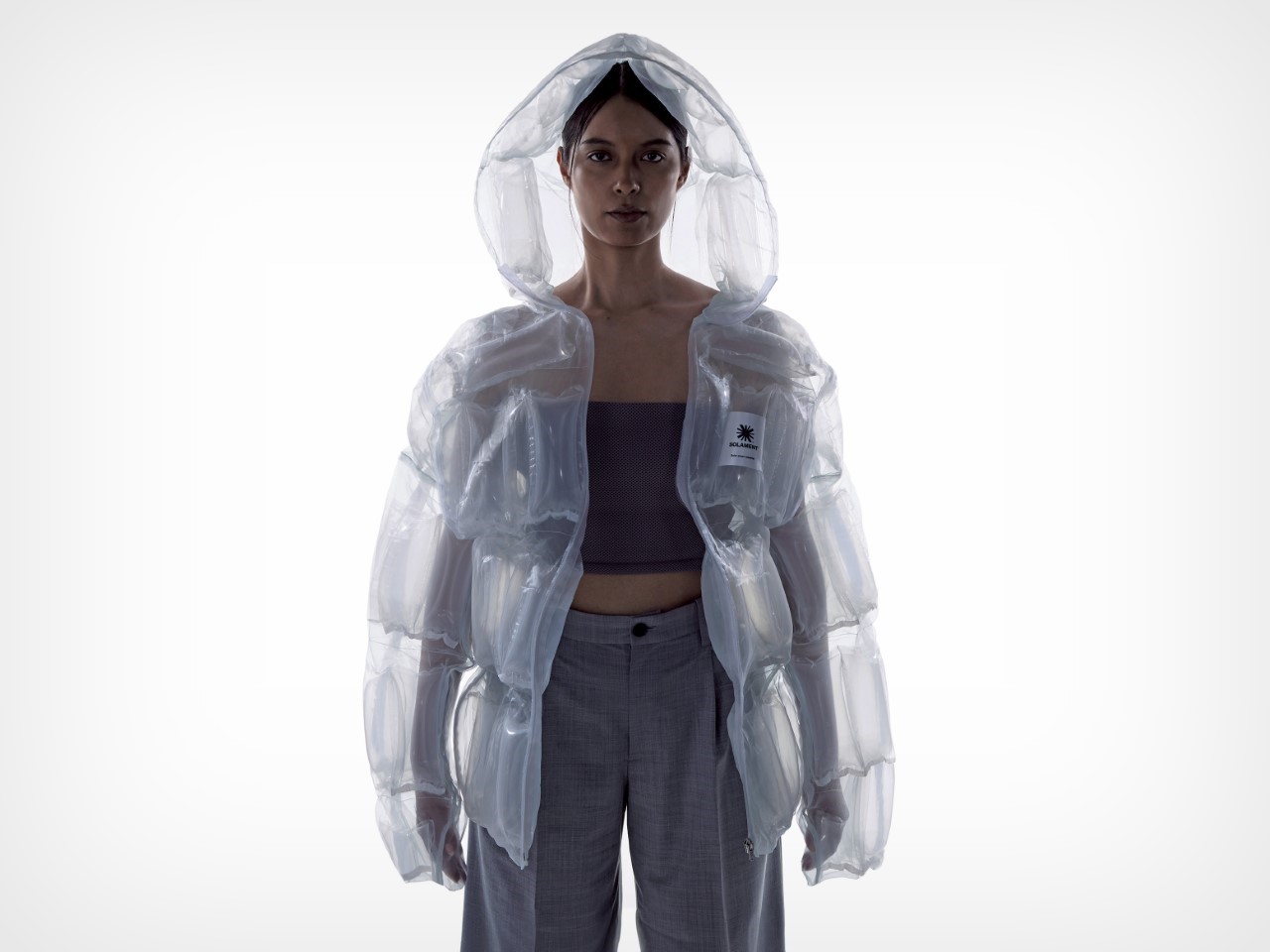
In an industry often criticized for its environmental impact, the Down-Less Down Jacket bursts onto the scene as a symbol of sustainable style. Created by the innovative minds at Droga5 Tokyo, this jacket isn’t just eco-friendly—it’s a groundbreaking fusion of fashion and future-ready technology. As insanely gimmicky as this jacket looks with its inflated transparent design, it utilizes an innovative super-material that keeps you warm and insulated without a single down feather, thanks to its SOLAMENT material.
material.
But what makes it truly remarkable? This transparent wonder absorbs sunlight’s near-infrared rays, transforming them into instant, cozy warmth that rivals traditional down jackets. No feathers, no fuss—just ingenious use of agricultural nets and packing materials. This approach doesn’t just cut down on resources; it flips the script on apparel manufacturing, demanding a rethink of what’s truly necessary. SOLAMENT technology doesn’t just change how we dress; it could revolutionize how we live. Its heat-shielding prowess allows it to let in light while blocking out heat, offering a zero-fossil-fuel approach to climate control in buildings and greenhouses. The Down-Less Down Jacket is more than an item of clothing; it’s a bold statement for a sustainable tomorrow and a harbinger of innovations that could reshape industries far and wide.
technology doesn’t just change how we dress; it could revolutionize how we live. Its heat-shielding prowess allows it to let in light while blocking out heat, offering a zero-fossil-fuel approach to climate control in buildings and greenhouses. The Down-Less Down Jacket is more than an item of clothing; it’s a bold statement for a sustainable tomorrow and a harbinger of innovations that could reshape industries far and wide.
Future-X by HD Hyundai XiteSolution
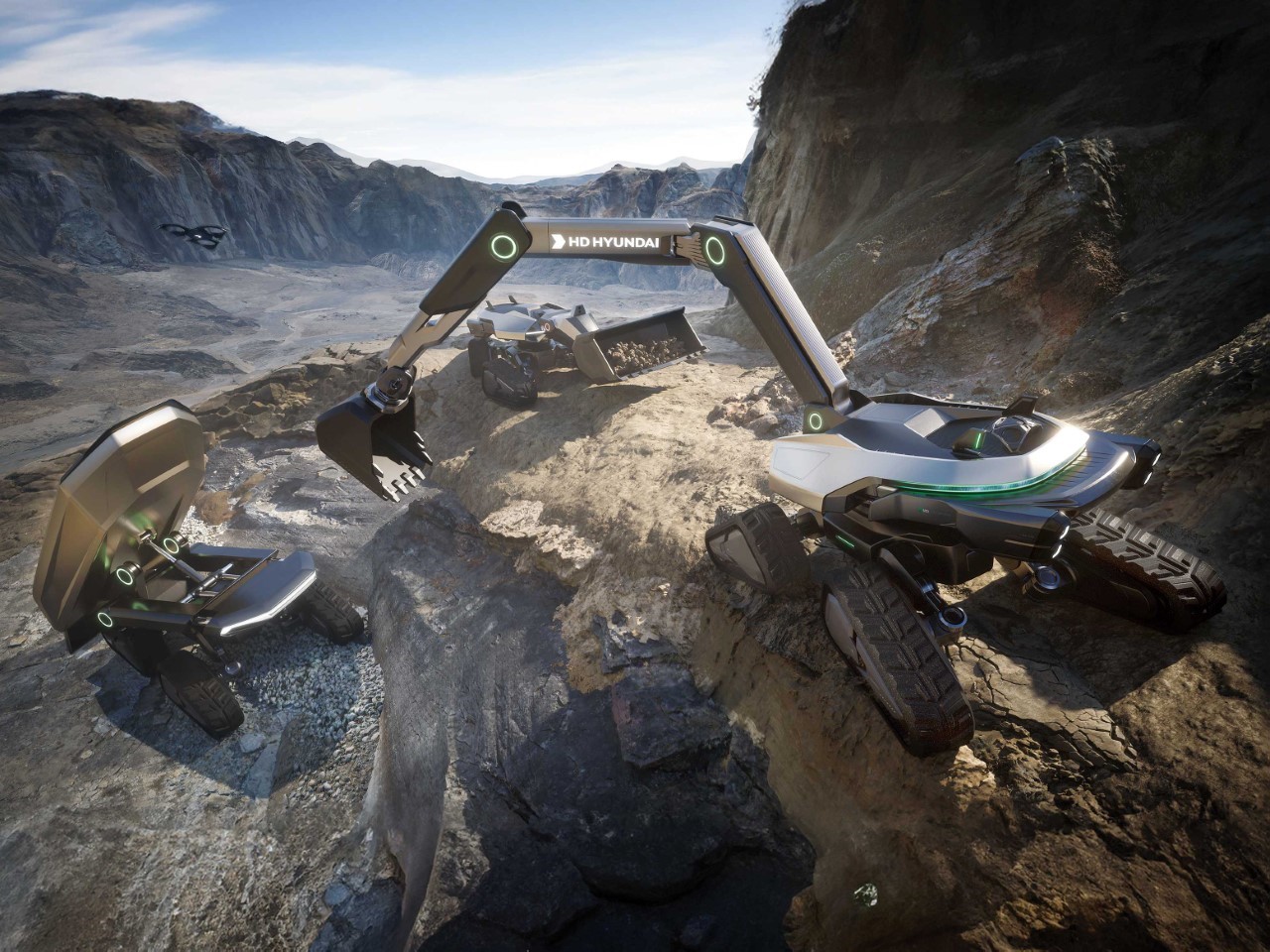
Introducing Future-X by HD Hyundai XiteSolution—a groundbreaking leap in construction equipment design, crafted for tomorrow’s autonomous sites. This cabinless marvel part of Hyundai’s Future Builder vision emphasizes adaptability and efficiency. Equipped with a 4X4 crawler system, it smoothly navigates challenging terrains, while its auto-balancing counterweight dynamically adjusts to varied loads, ensuring seamless operation.
Safety and sustainability are seamlessly integrated into Future-X. Advanced technologies like radar, stereo vision cameras, AVM, and GNSS provide robust site safety, enhancing functionality. Wrapped in eco-conscious ‘Land Gold’ bio paint, it’s built using recycled and recyclable materials, including eco-rubber track shoes, reinforcing its sustainable ethos. Future-X represents more than just machinery; it’s a step towards a tech-driven, eco-friendly future in construction, showcasing HD Hyundai’s commitment to coupling cutting-edge innovation with environmental stewardship.
Dwo by Dogma Design
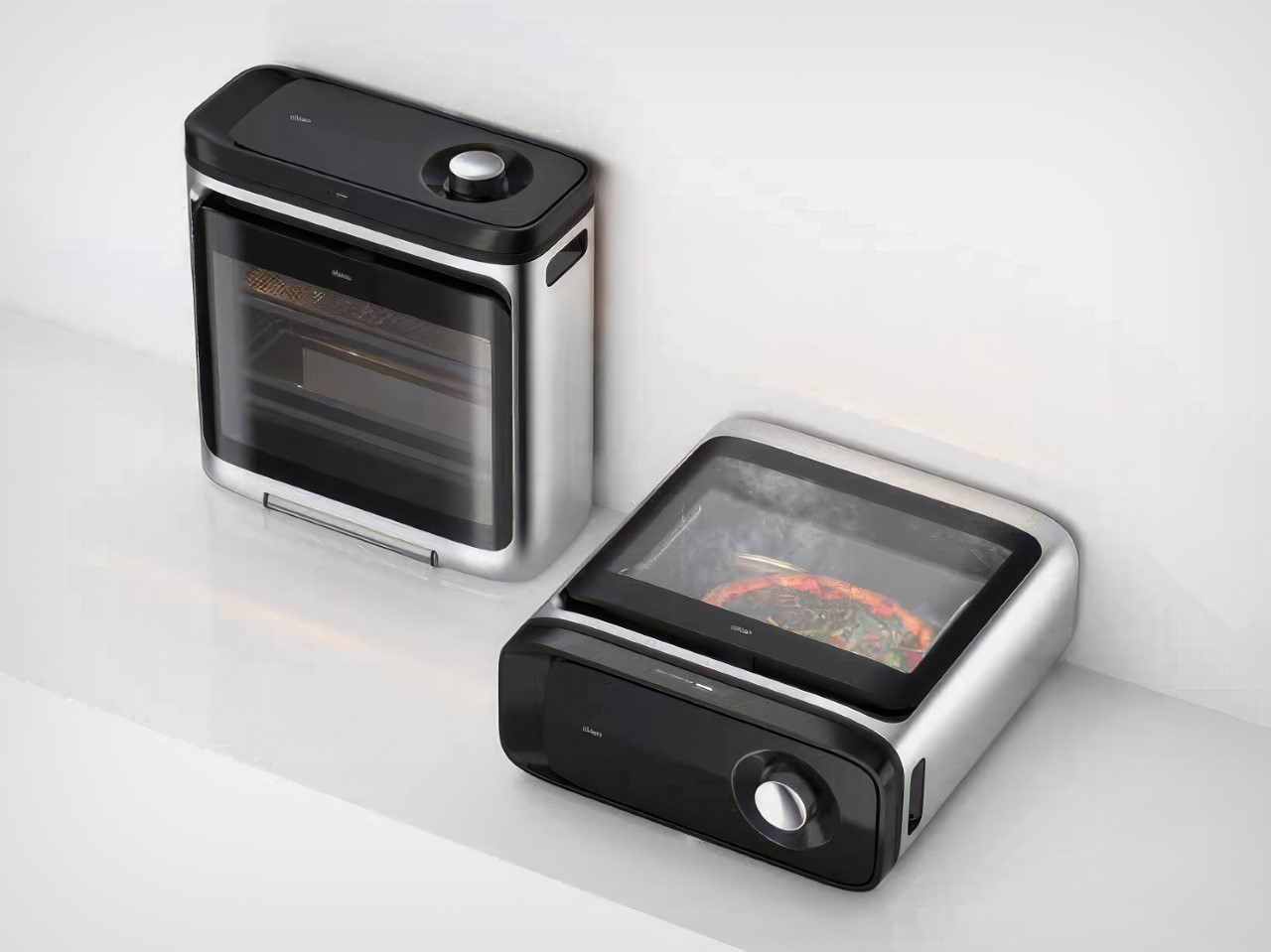
Meet Dwo, the versatile cooking appliance designed to optimize your kitchen space while meeting diverse culinary needs. With its dual-position functionality, Dwo transforms from a slim multi-cooker when kept standing to a spacious convection oven when laid on its back, adapting seamlessly to whatever you’re cooking. This innovative design saves countertop space when upright and expands to accommodate larger dishes when horizontal, fitting perfectly into any kitchen layout.
Dwo’s intelligent design includes convection trays and a double-door system, allowing you to switch between cooking modes effortlessly. In its upright position, it acts as a multi-layer oven and multi-cooker, perfect for preparing complete meals with minimal clutter. When additional capacity is needed, simply tilt Dwo horizontally to expand the cooking space without requiring extra appliances. Its advanced convection technology, featuring a triple fan and efficient heating system, ensures even and superior cooking results. The upright position also includes an additional heating surface for moisture-rich cooking, enhancing the flavor and texture of foods like rice or pasta. With user-friendly features like a single navigation knob, integrated side handles, and a front roller, Dwo promises not only performance but also ease of use.
i37 Dynamic Ring by Shenzhen Shangtang Design Consulting Co., Ltd.
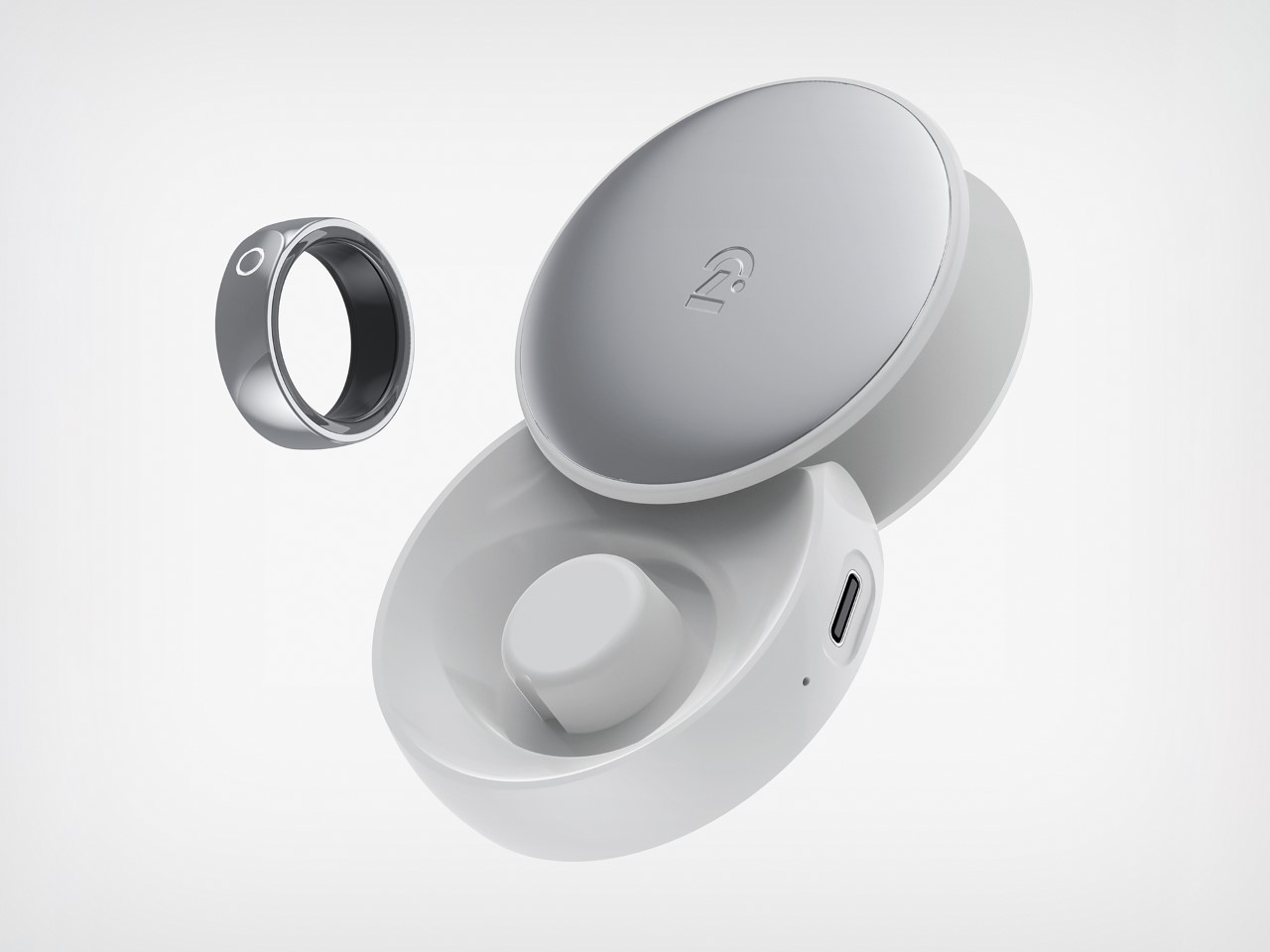
The i37 Dynamic Ring is a sophisticated health wearable that offers a comprehensive suite of features to monitor your well-being. From sleep quality and luteal phase tracking to monitoring blood pressure trends and temperature changes, this ring covers all bases. It even tracks your calorie consumption and suggests personalized exercise routines, providing real-time feedback to help you make informed lifestyle decisions.
Advanced biosensing technologies, including photoplethysmography, heart rate sensors, and tri-axis accelerometers, ensure precise monitoring. Its Bluetooth connectivity seamlessly syncs data with your smartphone for in-depth health analysis. Users can easily pair the ring with the i37 Health App, activating a range of intuitive monitoring functions accessible to fitness beginners and enthusiasts alike. Designed with fashion in mind, the ring is crafted from premium silver and gold, combining style with functionality. Its sleek, waterproof, and dustproof design ensures it performs well in any environment, while the lightweight construction and ergonomic fit make it comfortable for all-day and night wear. The i37 Dynamic Ring is the perfect companion for health-conscious individuals who value both advanced technology and stylish design.
Impulse Cooktop by Blond
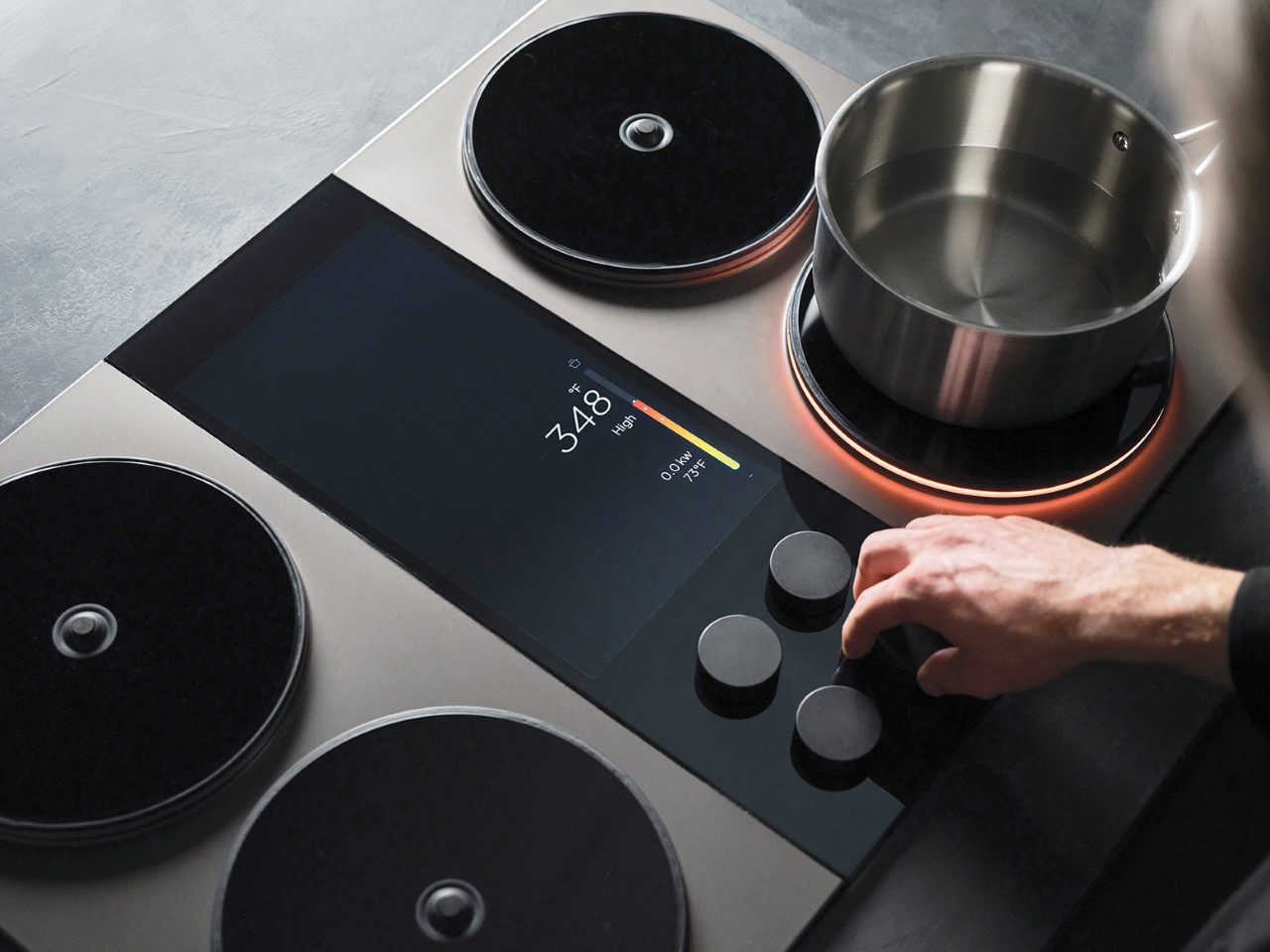
San Francisco start-up Impulse is setting a new standard in high-performance appliances and home energy solutions, starting with its battery-integrated induction cooktop. Designed to blend power, precision, and ease of installation, the Impulse Cooktop not only enhances kitchen performance but also leads the charge toward a more sustainable future. By integrating energy storage and leveraging renewable sources, Impulse is transforming how we approach home energy consumption, setting the stage for homes to transition to 100% electric energy with simple appliance upgrades.
The Impulse Cooktop stands out with its innovative design that echoes the beauty of deejaying equipment instead of looking like traditional kitchen appliances (courtesy Studio Blond). Its built-in batteries allow seamless use of both stored and grid energy, making it a high-performance and eco-friendly option. Installation is as simple as dropping it into a countertop and plugging it in, a marked difference from traditional electric or gas stoves. With raised burners that protect the cooktop’s screen and optimize space for the battery, the appliance is both practical and stylish. Its modular design simplifies repairs and future upgrades, while precision-milled, removable control knobs maintain a sleek glass surface that is easy to clean. The illuminated raised burners provide a functional aesthetic, indicating the power level through varying shades of red, adding both flair and functionality to your cooking experience.
Lifestyle Delivery Vehicle 190 by Canoo
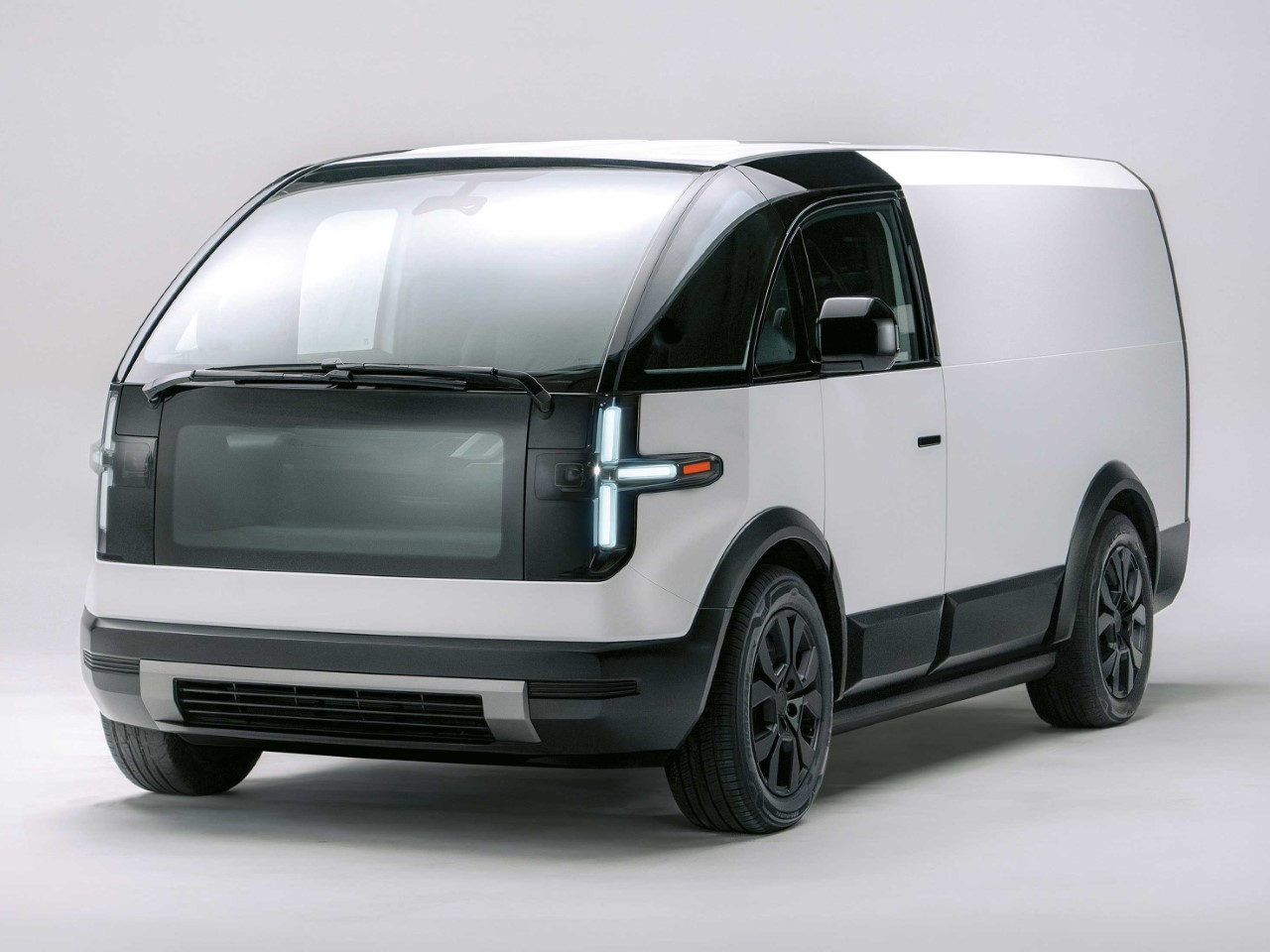
Think delivery vehicles are mundane? Think again. Meet the Lifestyle Delivery Vehicle (LDV) 190, the Class 2 EV that’s rewriting the rules of the road. Sporting a compact, multi-purpose platform, this vehicle excels in cargo density, safety, and comfort, all while claiming the smallest footprint and longest range in its class. But here’s where it gets exciting: designed from the inside out, the LDV 190 doesn’t just carry boxes—it carries innovation. With a low floor and roomy cabin paired with steer-by-wire technology, it’s a breeze for drivers of all abilities to hop in and navigate.
The LDV 190 isn’t your average delivery van; it’s a mobile marvel of adaptability. Its patent-pending interchangeable rear cargo cartridge lets you tailor your setup, whether it’s barn doors that swing wide open at 270 degrees, sleek tambour doors, or a tailgate with a loading ramp. Inside, you’ll find a whopping 172 cubic feet of cargo space, plus more in the front if you opt for the single-seat configuration. And let’s talk about organization—shelving, storage bins, and a sliding cargo floor with a hefty 1000-lb capacity make loading and unloading a symphony of efficiency. The interior is lit up with LED brilliance, and optional composite translucent roof panels welcome natural light, creating a pleasant glow. With the LDV 190, it’s not just about getting from A to B—it’s about transforming the journey into something more sustainable, innovative, and human-centered.
U9 Flagship High-End Audio Engine TV by Hisense
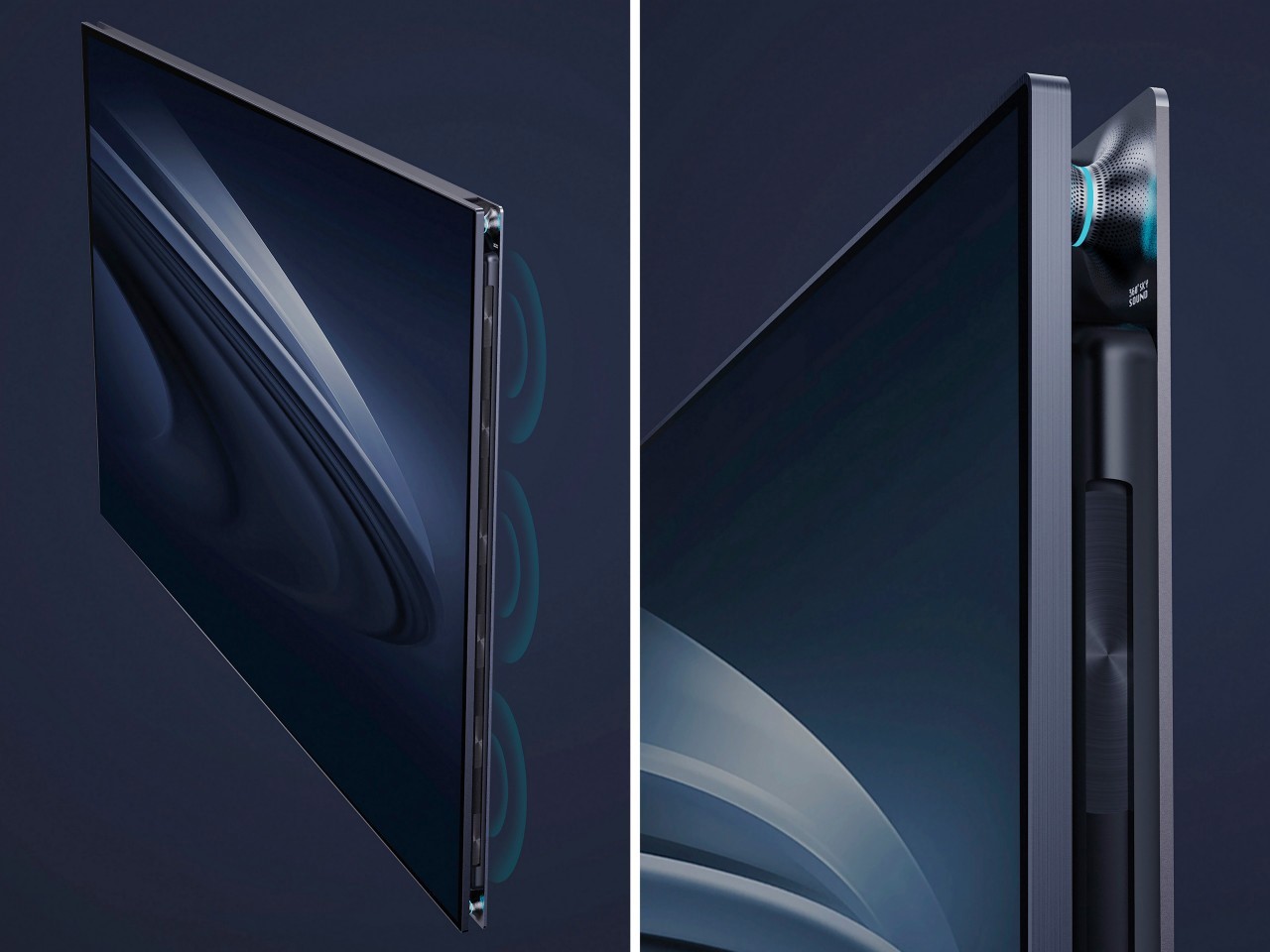
Drawing inspiration from high-performance car engineering, the U9 Audio Engine TV features an audio system that echoes engine cone design for a truly robust sound experience. Its one-piece zero-bezel frame and 360-degree sound deliver a carefully engineered blend of visual elegance and sonic immersion, setting new trends in the industry.
This TV is designed to be both a centerpiece in your living room and a remarkable piece of home décor. The side-surround array speaker system offers richly layered sound, enhancing your viewing experience with its authentic audio delivery. Even amidst intense competition, Hisense remains focused on leading the way in audio-visual technology, offering consumers a premium experience that underscores its commitment to quality and innovation.
Surge S32 by Hero Motocorp
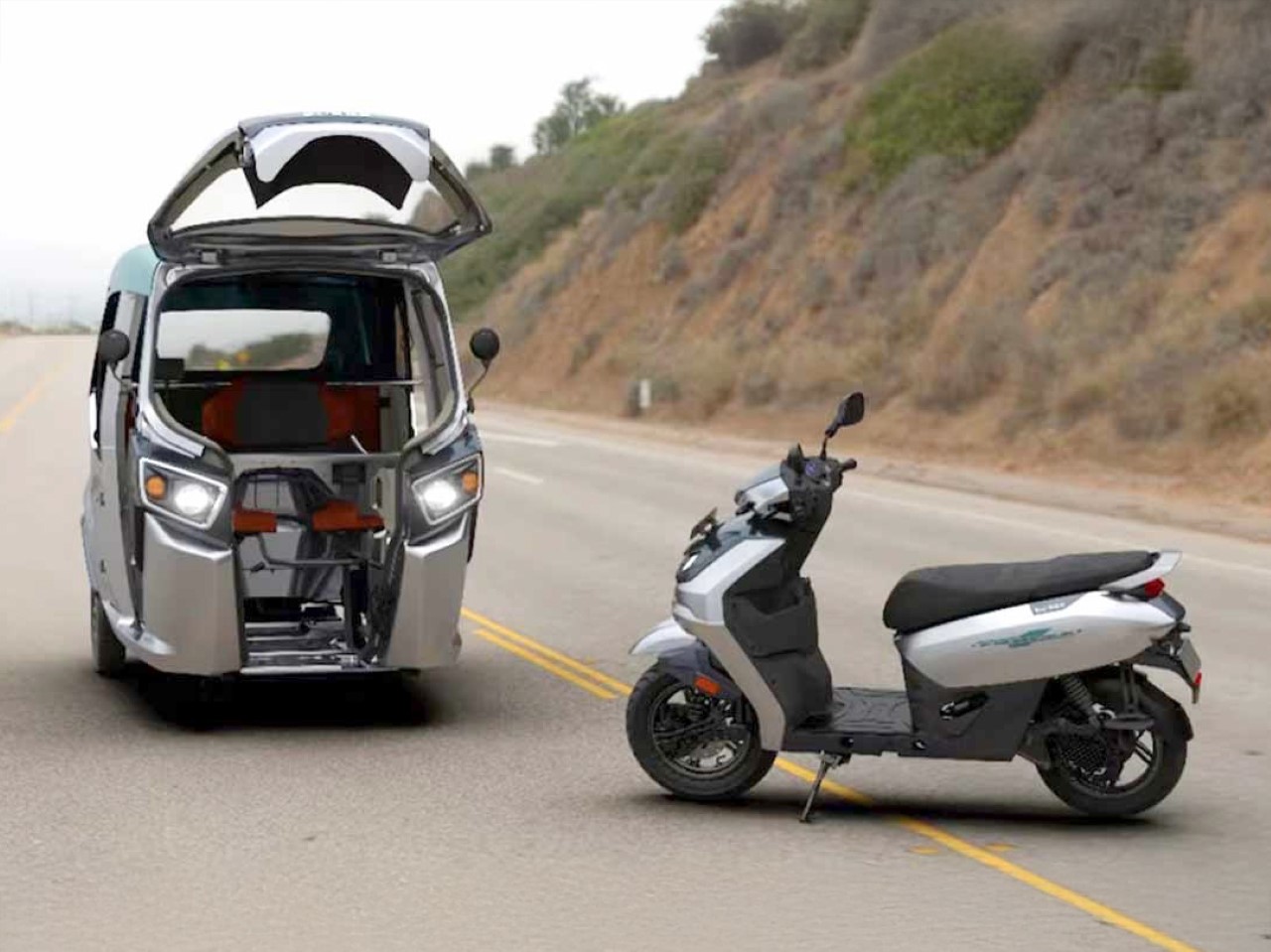
The Surge S32 by Hero MotoCorp is an innovative electric vehicle that effortlessly shifts between a two-wheeler and a three-wheeler, adapting to your mobility needs with ease. Drawing inspiration from a warrior’s helmet, the design features a striking front fascia enhanced by a sleek piano black finish with silver accents, maintaining a balanced and robust aesthetic. This versatile vehicle not only embodies style but also fulfills the promise of eco-friendly, multipurpose driving.
The exterior flaunts sleek lines and vibrant color options, while the interior provides a minimalist yet luxurious feel, emphasizing comfort and elegance. Equipped with cutting-edge automated controls and sensors, the Surge S32 prioritizes safety on every journey. Its flexible design aims to reduce road congestion by serving multiple purposes in one vehicle. With over 50 patents filed, Hero MotoCorp has developed the AMSEP® platform, a scalable solution supporting a range of vehicle types from load carriers to passenger and utility vehicles, underscoring the Surge S32’s blend of style and functionality in the electric vehicle landscape.
Ventete aH-1 Cycle Helmet by Ventente Limited (Luminary Winner)
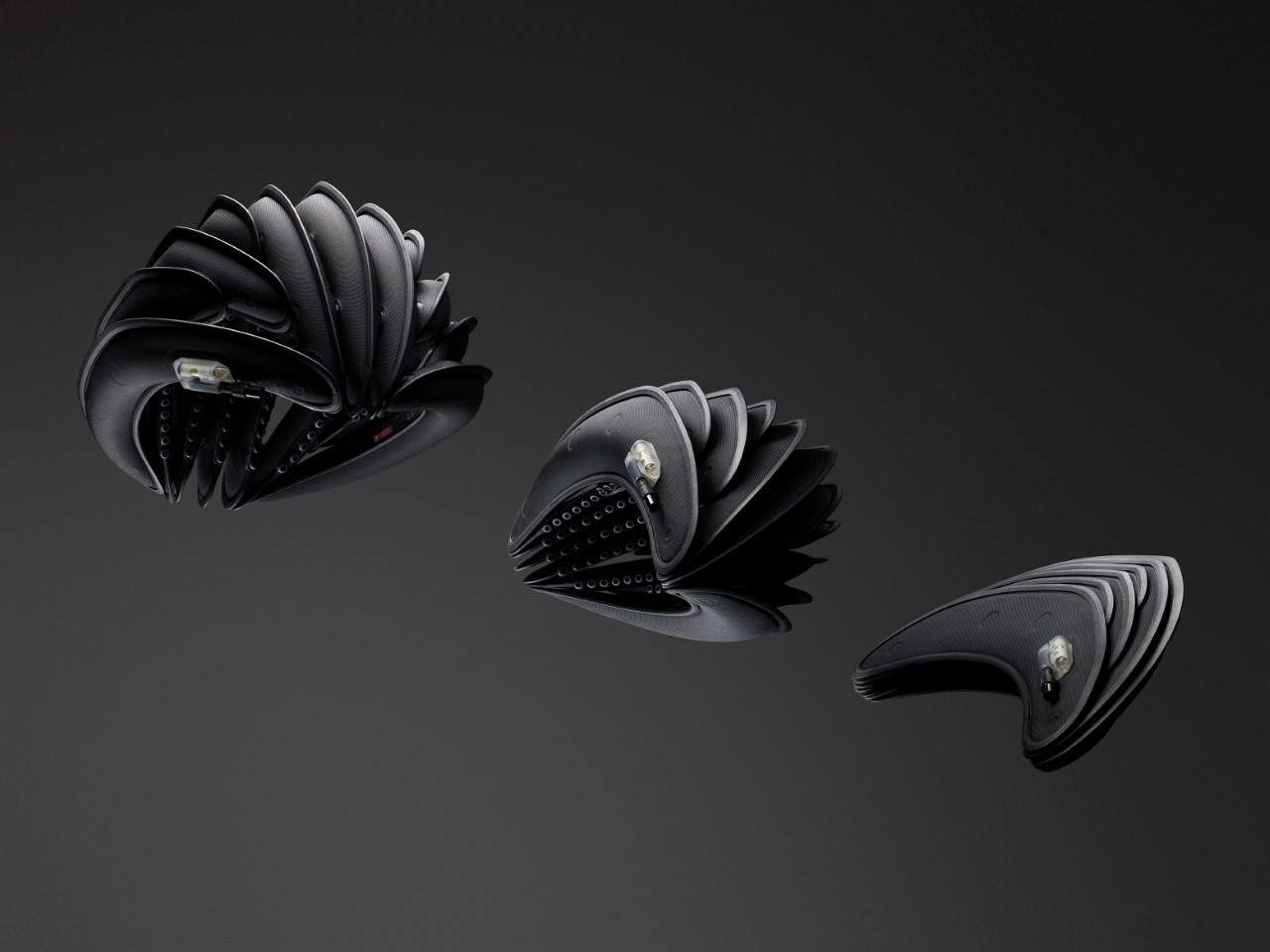
Ventete reimagines head protection with the aH-1 Cycle Helmet, an elegant fusion of functionality and innovation inspired by origami. Foregoing traditional foam, this inflatable, micro-collapsible helmet is designed for the modern urban traveler who values spontaneity as much as safety. In a striking shift away from half a century of conventional helmet materials, the Ventete aH-1 makes carrying a helmet as easy as pocketing a paperback. With a pneumatic structural design secured by 15 global patents, this helmet deflates to less than 3.5 cm. Inflation takes just 30 seconds with its compact USB-C pump, seamlessly integrating convenience into your daily ride.
Yet, the aH-1 is about more than just portability; it excels in comfort and safety. Unlike foam helmets, its unique chambered construction allows air to flow freely, providing superior cooling. Tests by the Swiss Federal Lab highlight its exceptional thermal comfort, rivaling the feeling of riding bareheaded. Safety isn’t an afterthought—it’s engineered in. Developed over nearly a decade by skilled architects and engineers, the Ventete aH-1 not only meets CE/UKCA safety standards but also shines in tests at HeadLab, Imperial College London, where its enhanced protection against rotational impacts places it at the forefront of helmet technology. Crafted in Switzerland, this helmet embodies a new era of quality and innovation in urban cycling.
Click here to view more Award-winning designs from the Red Dot Award: Design Concept
The post Red Dot Award 2024 Highlights: Groundbreaking Design Concepts You Can’t Miss first appeared on Yanko Design.
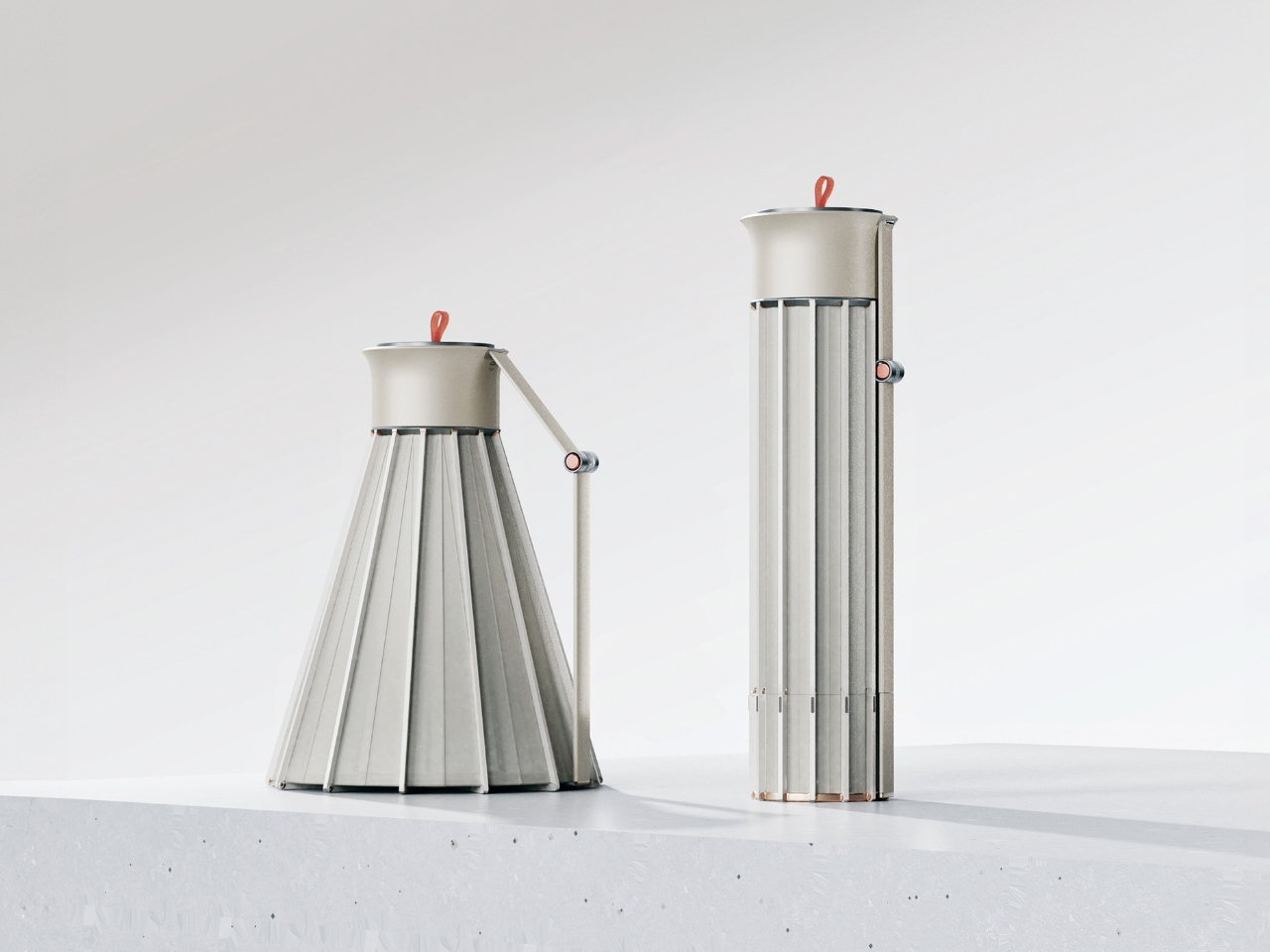
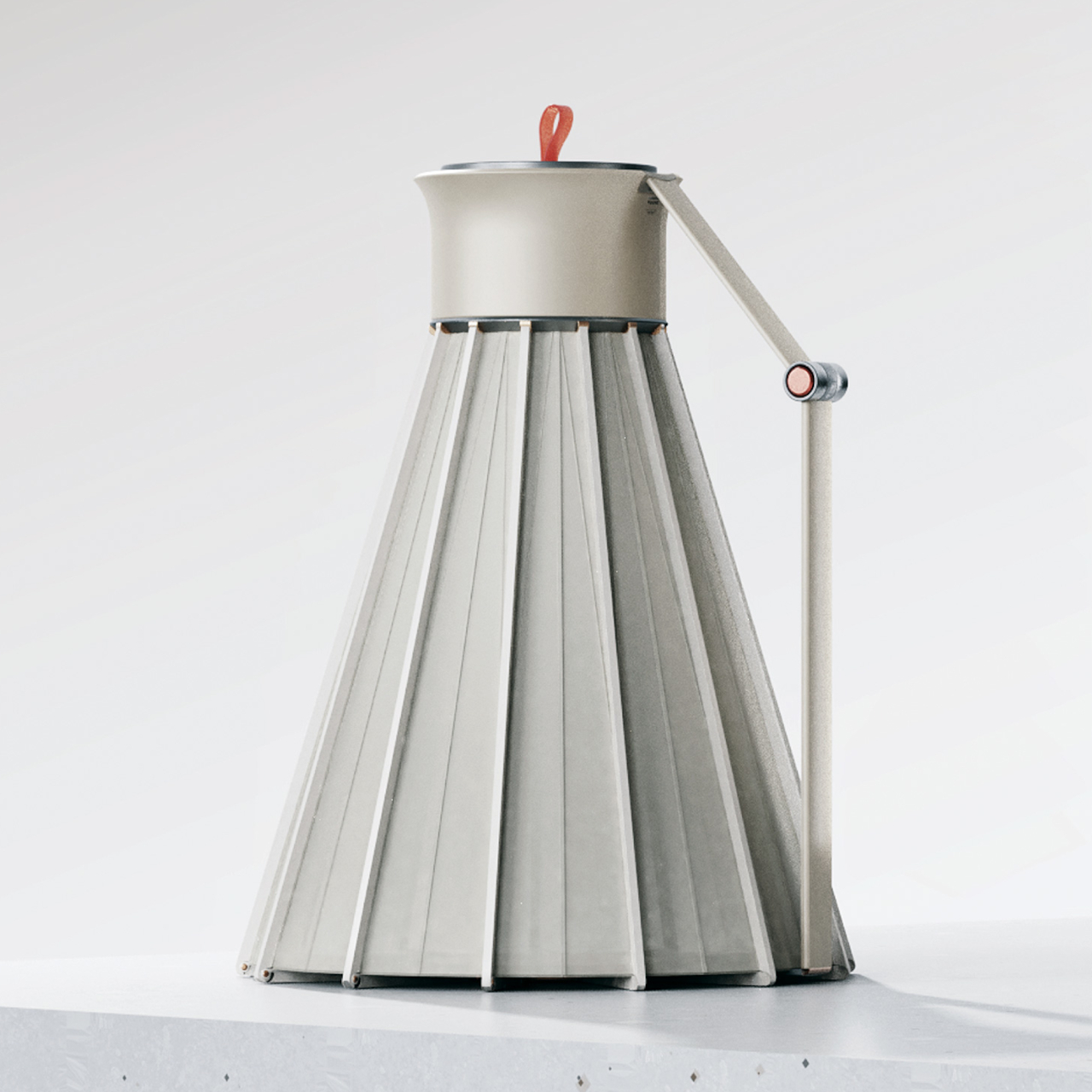
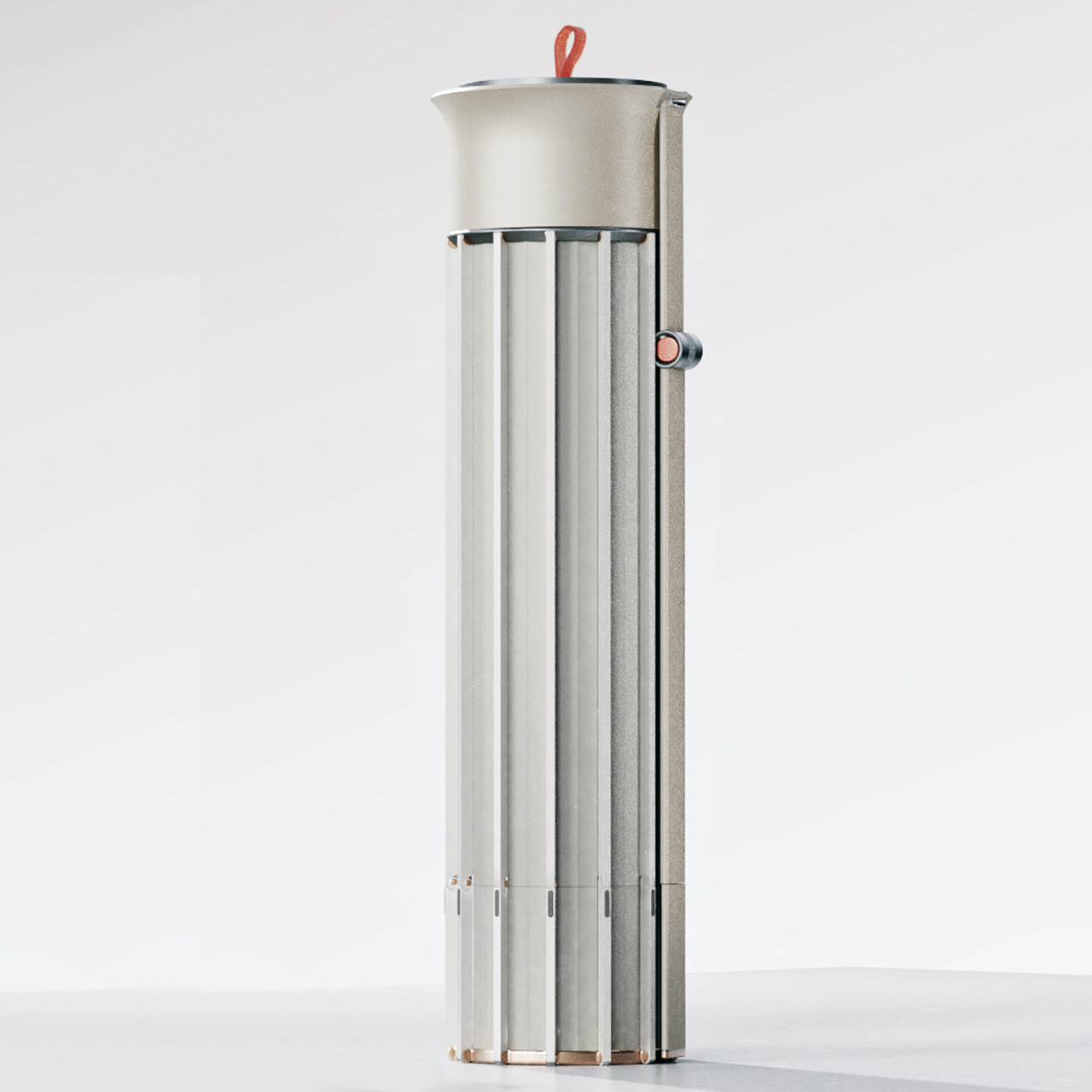
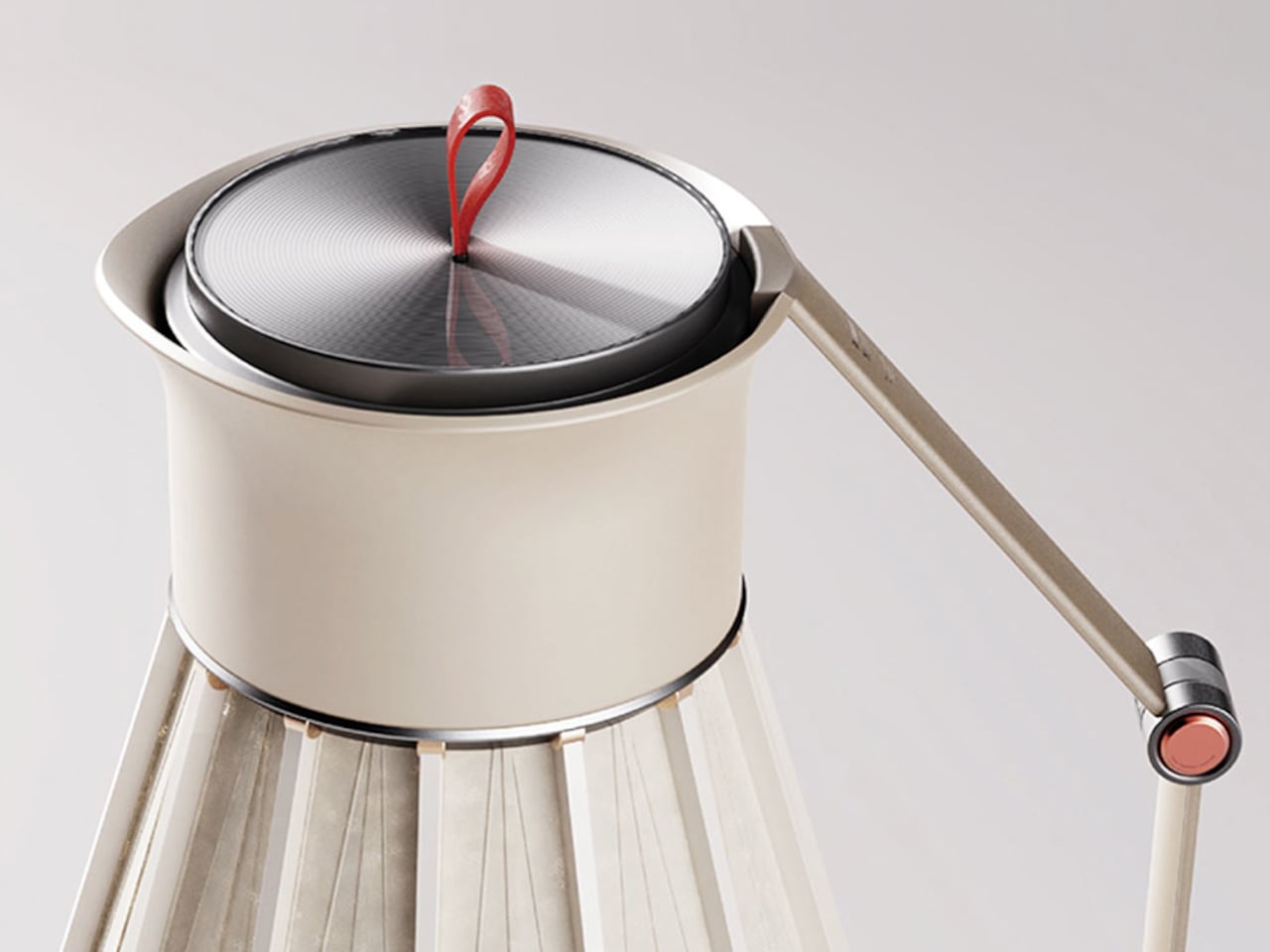
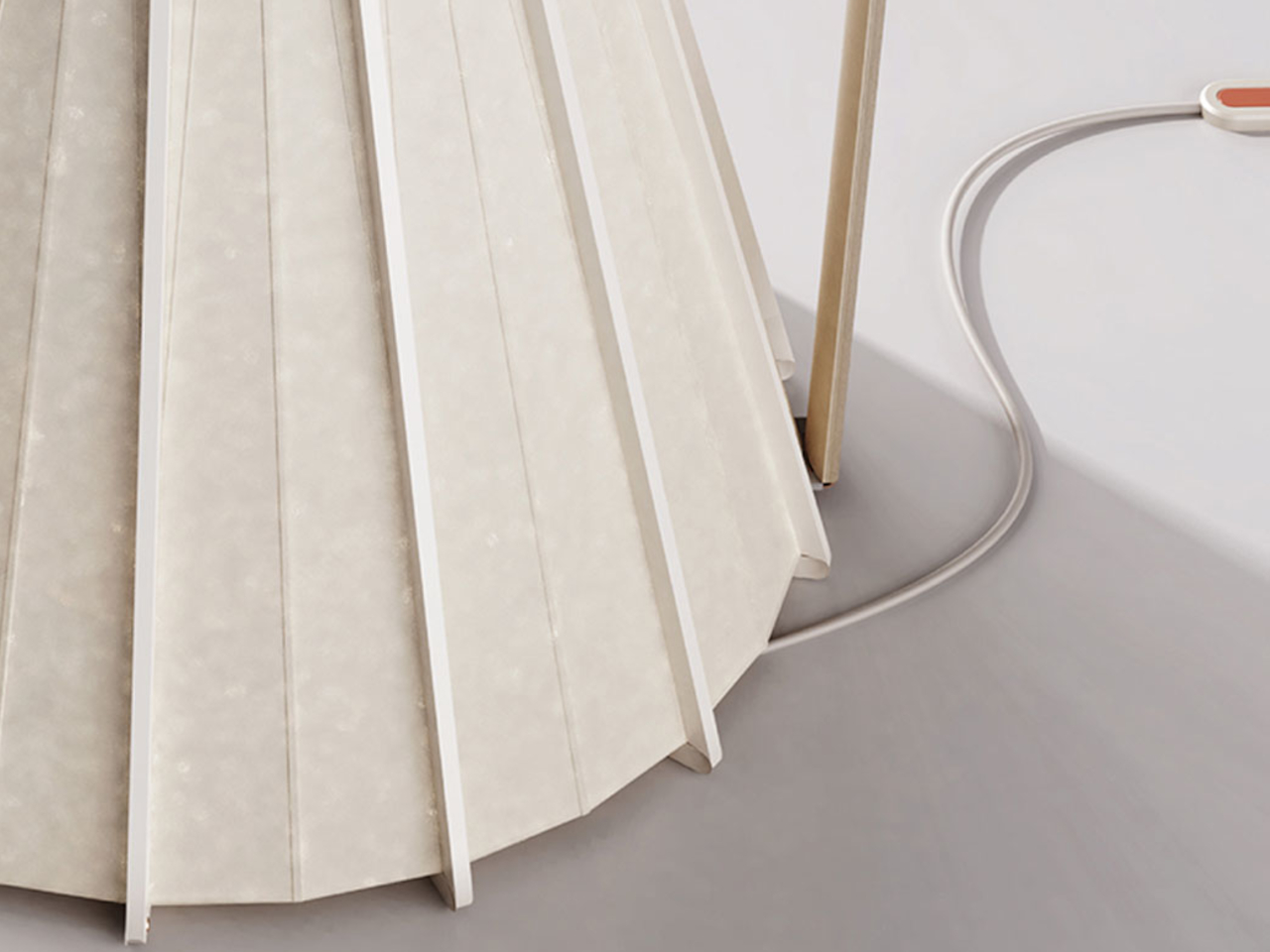
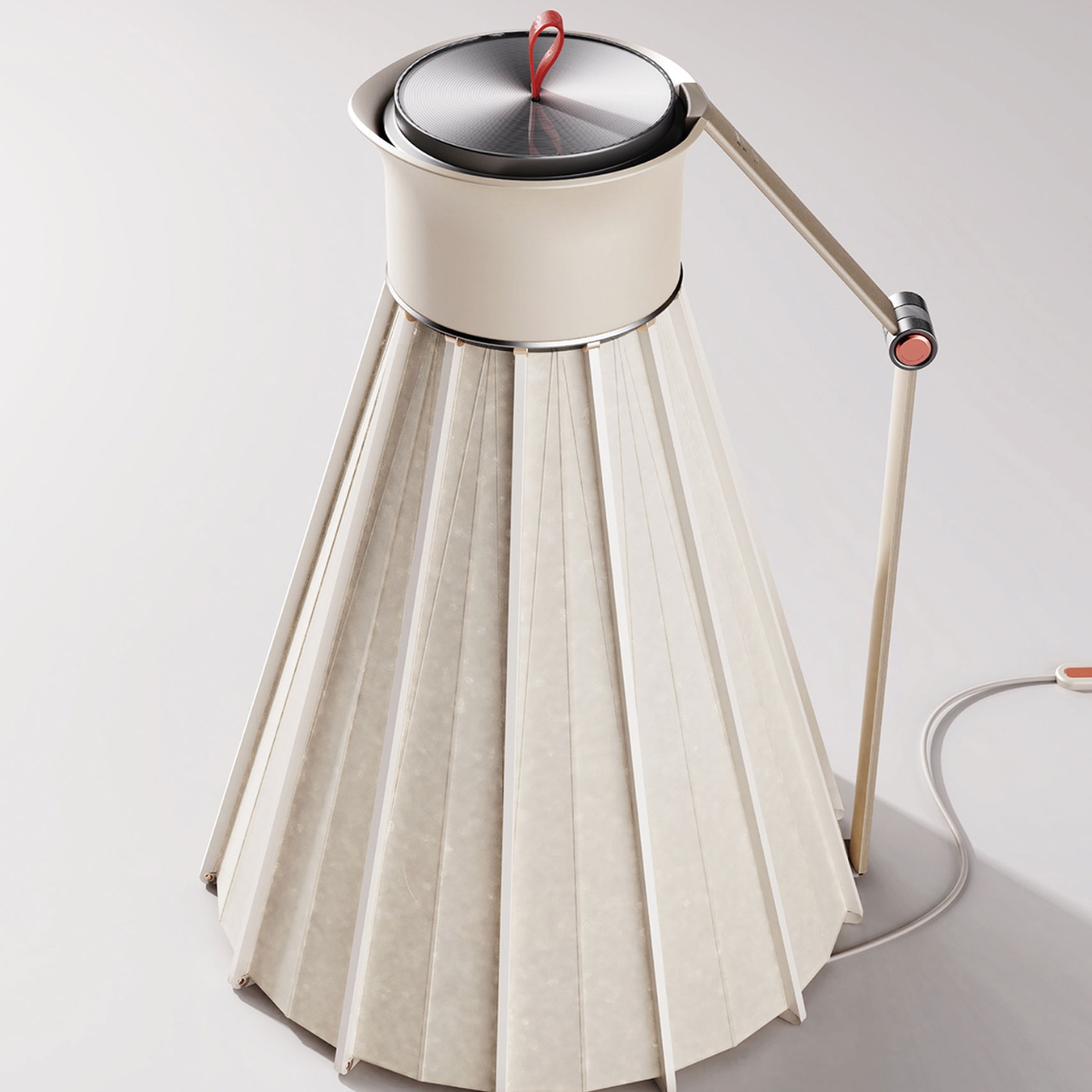

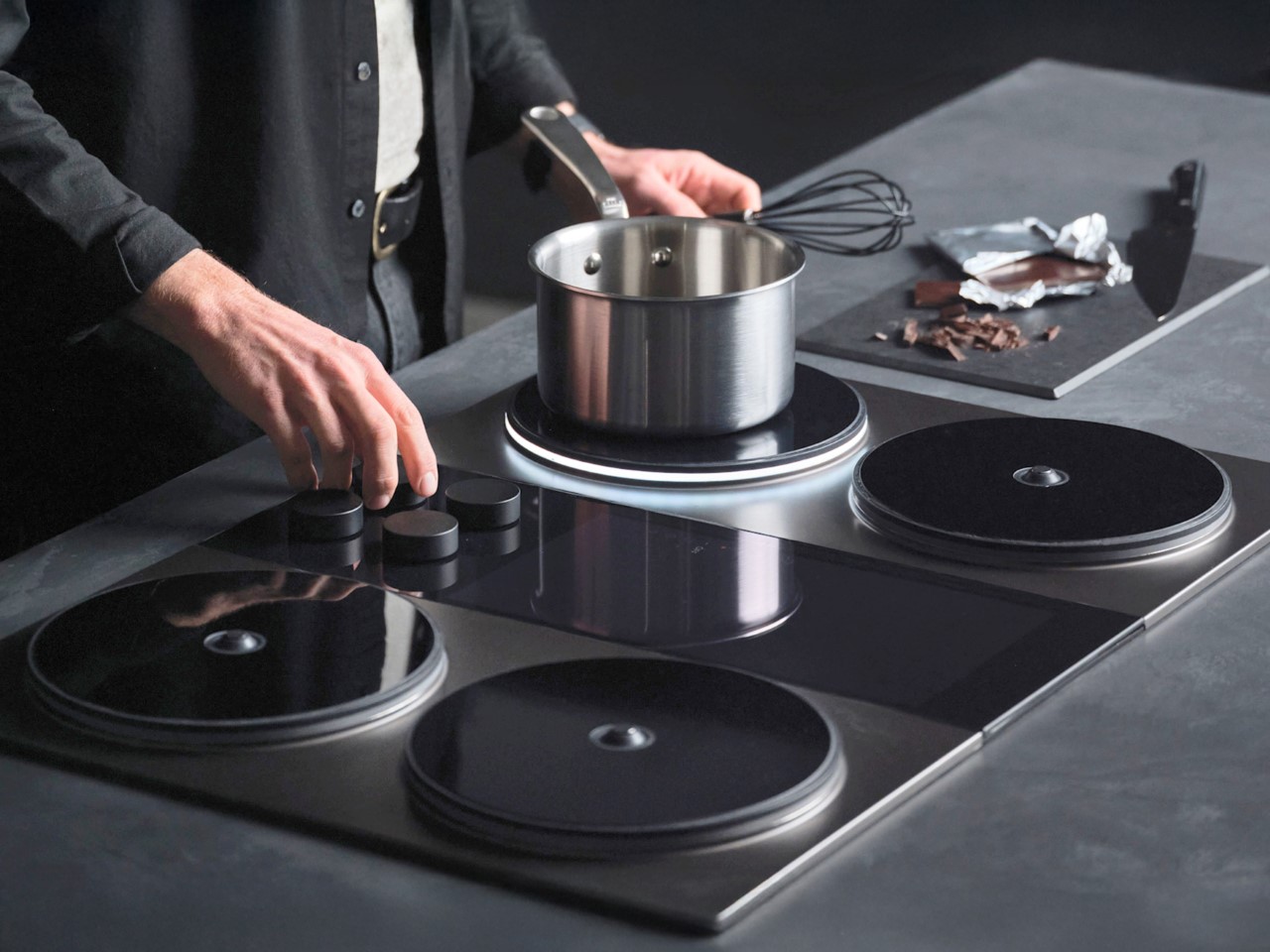
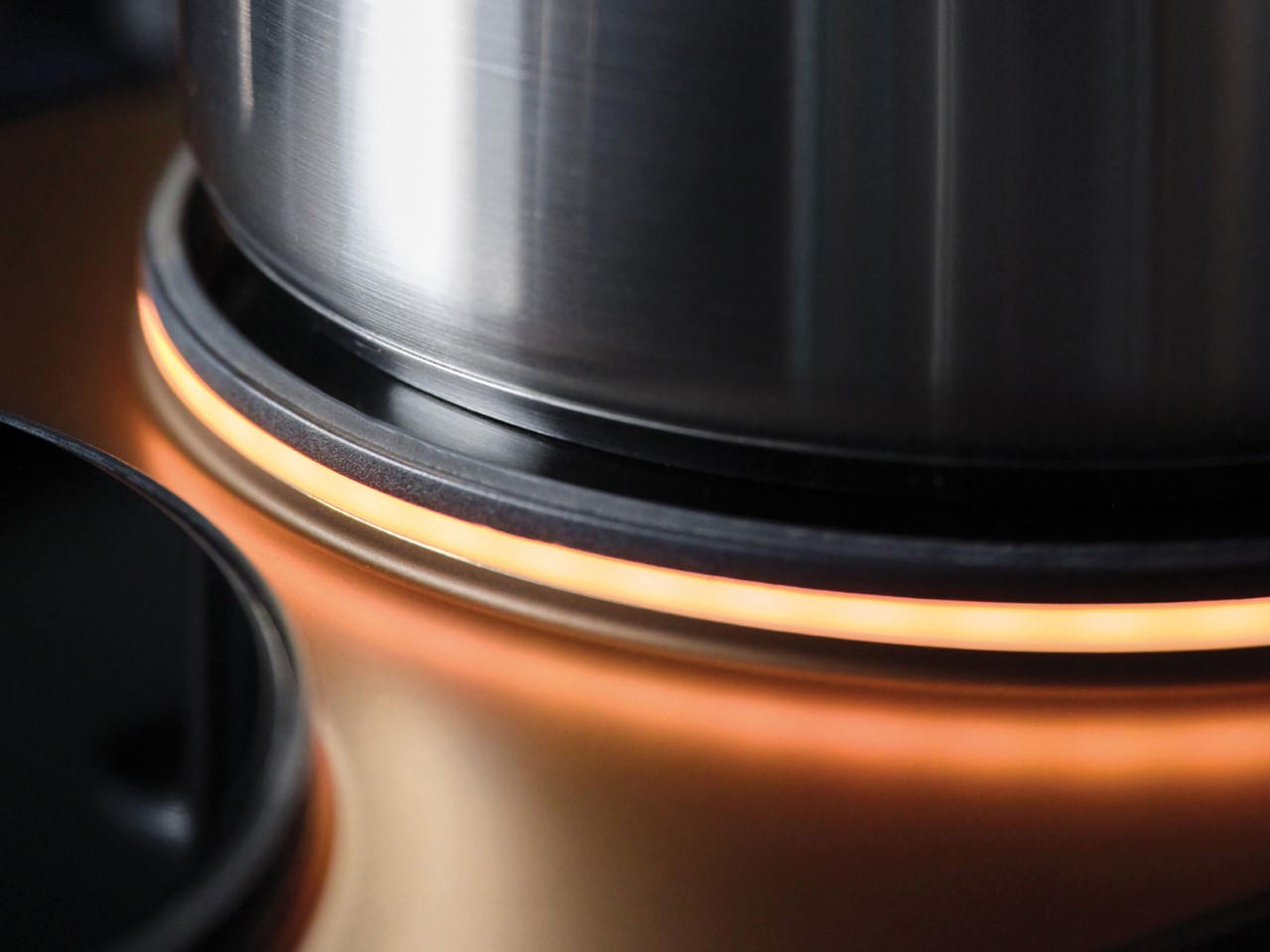
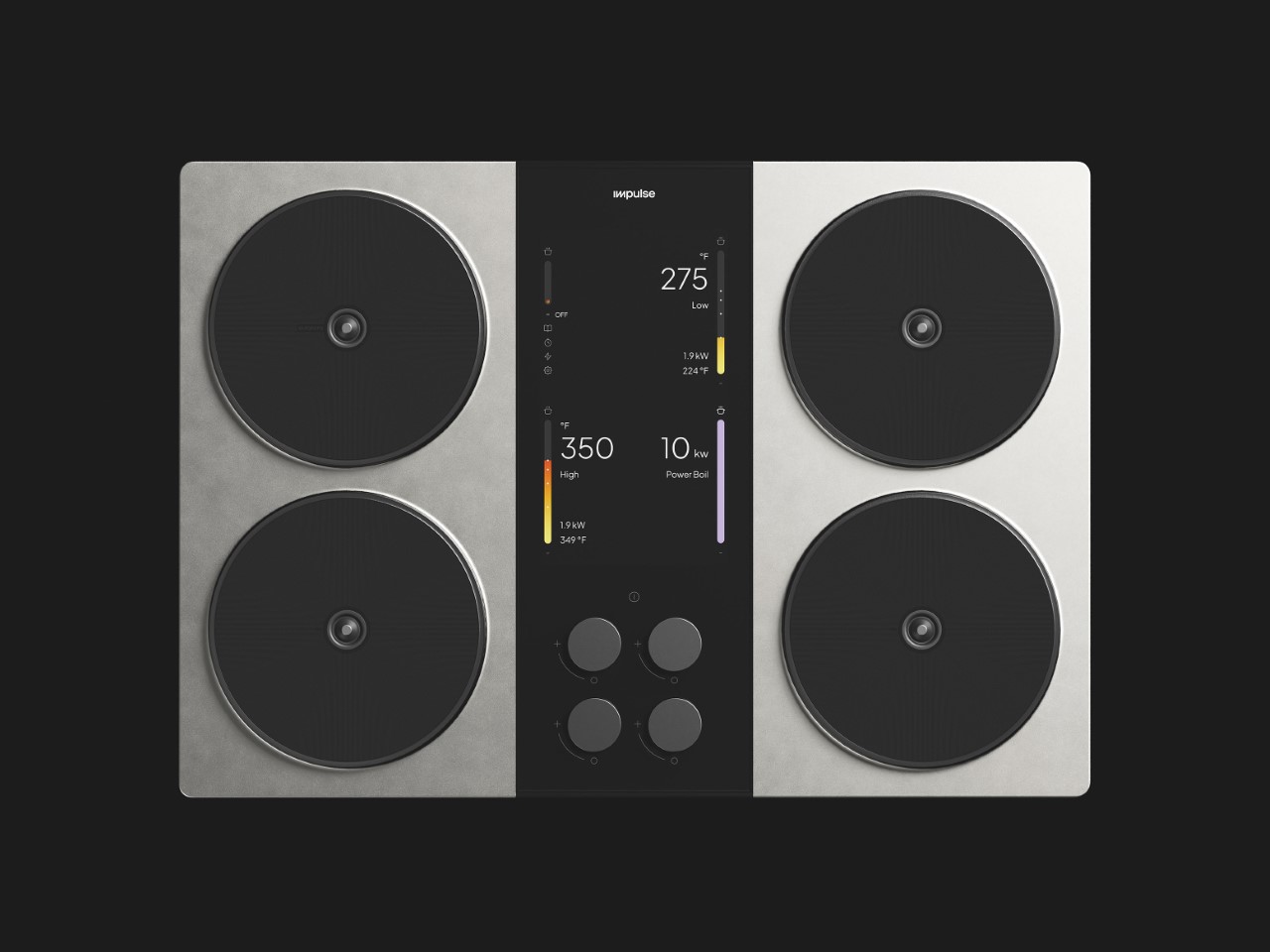
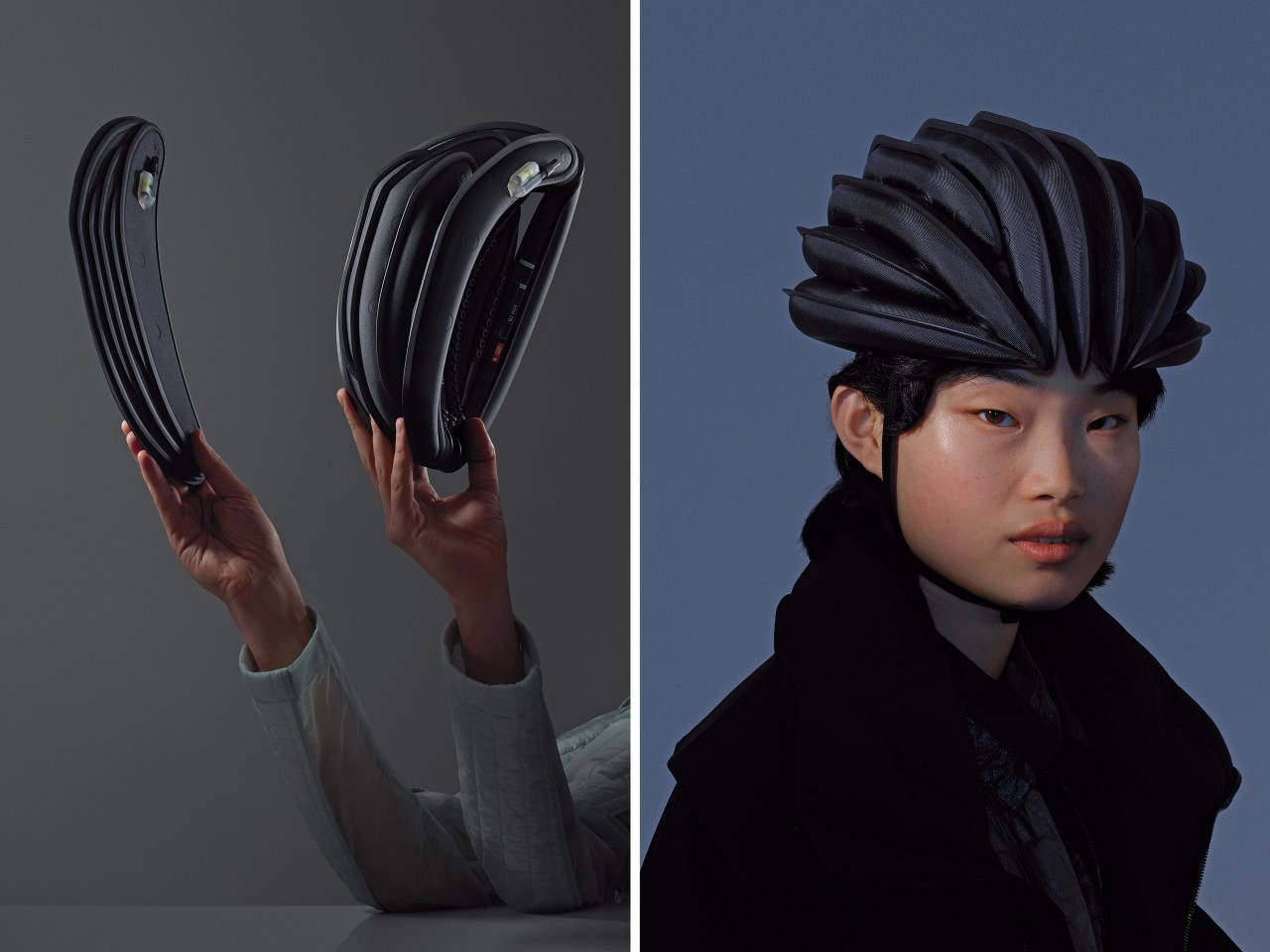


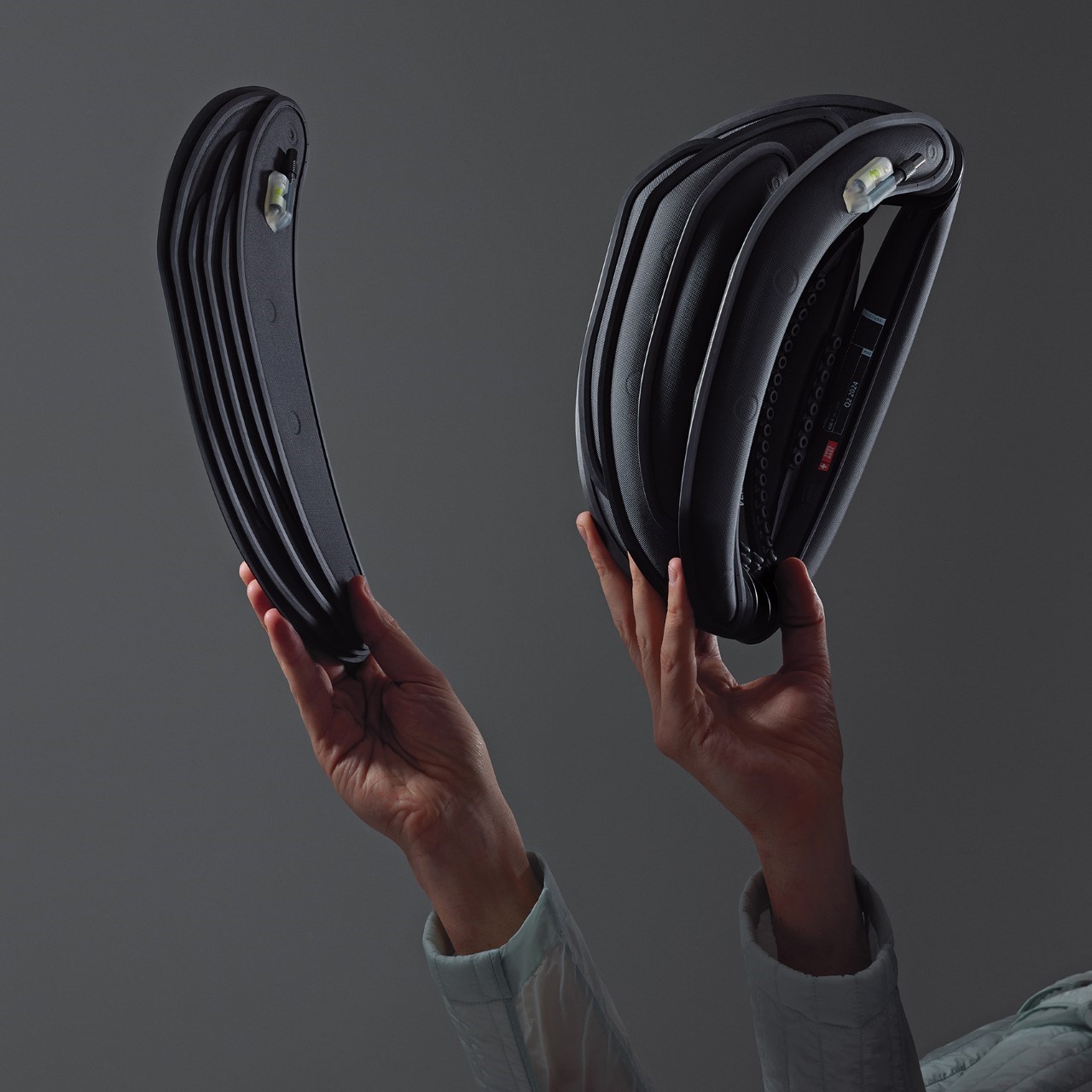
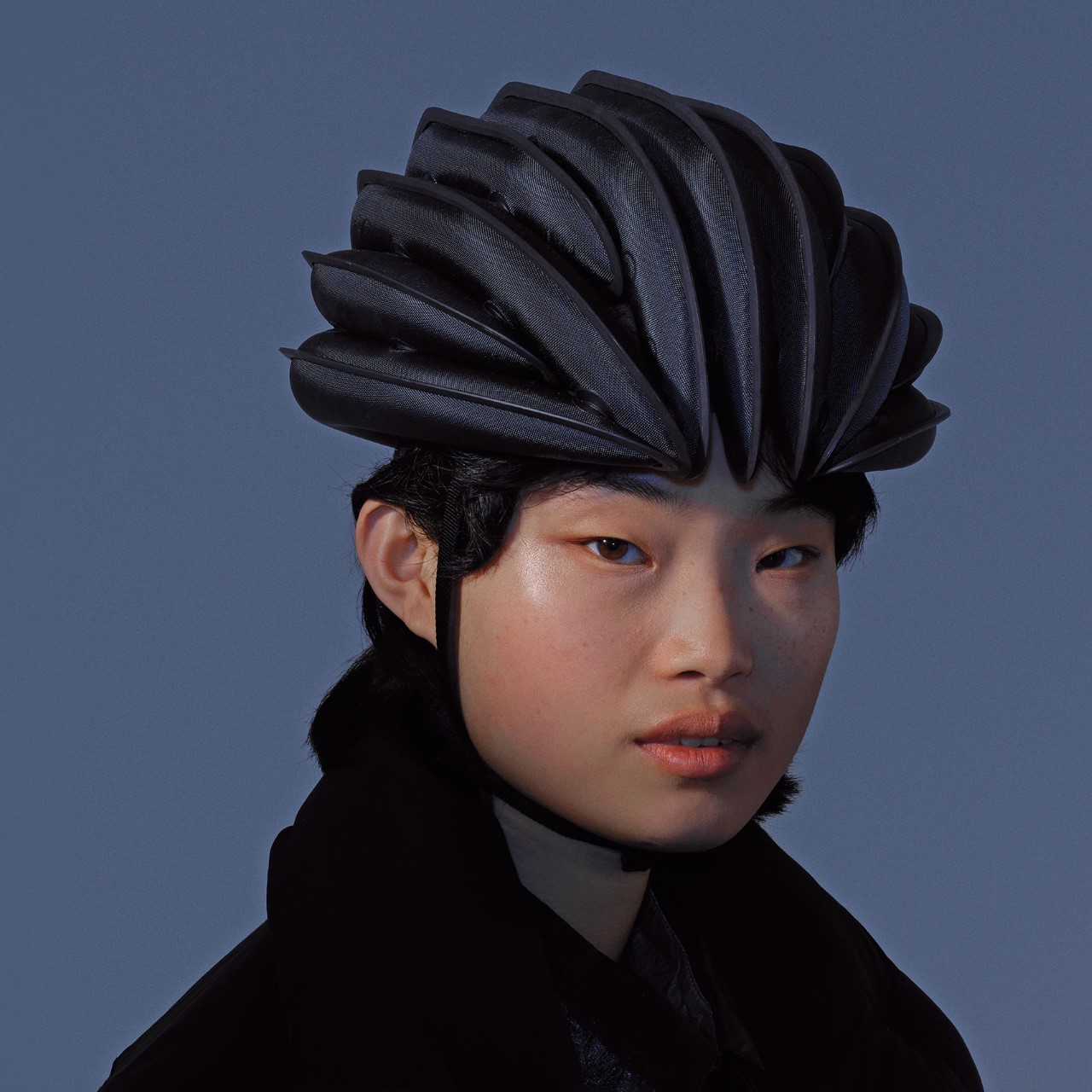
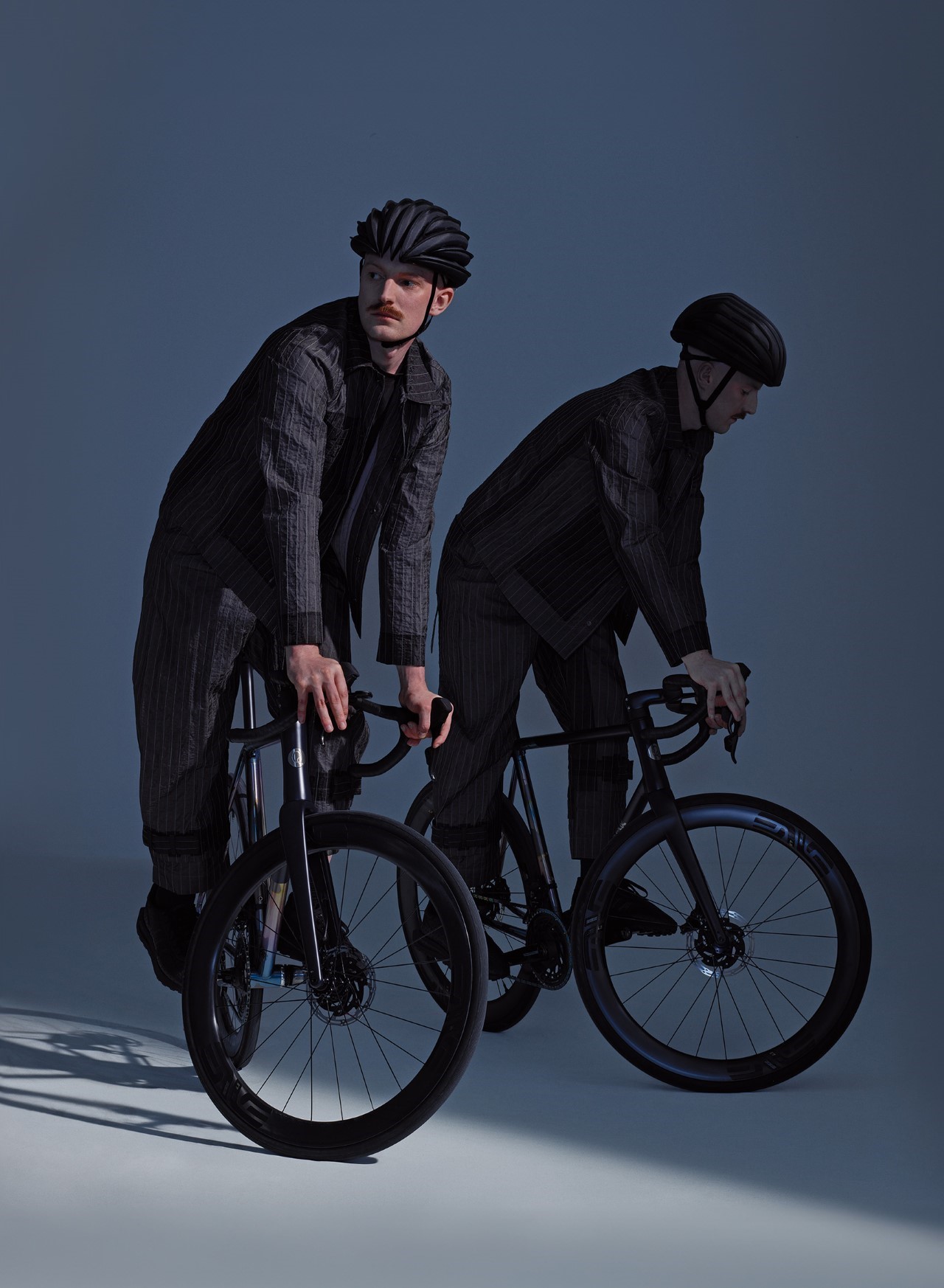



 material.
material.






